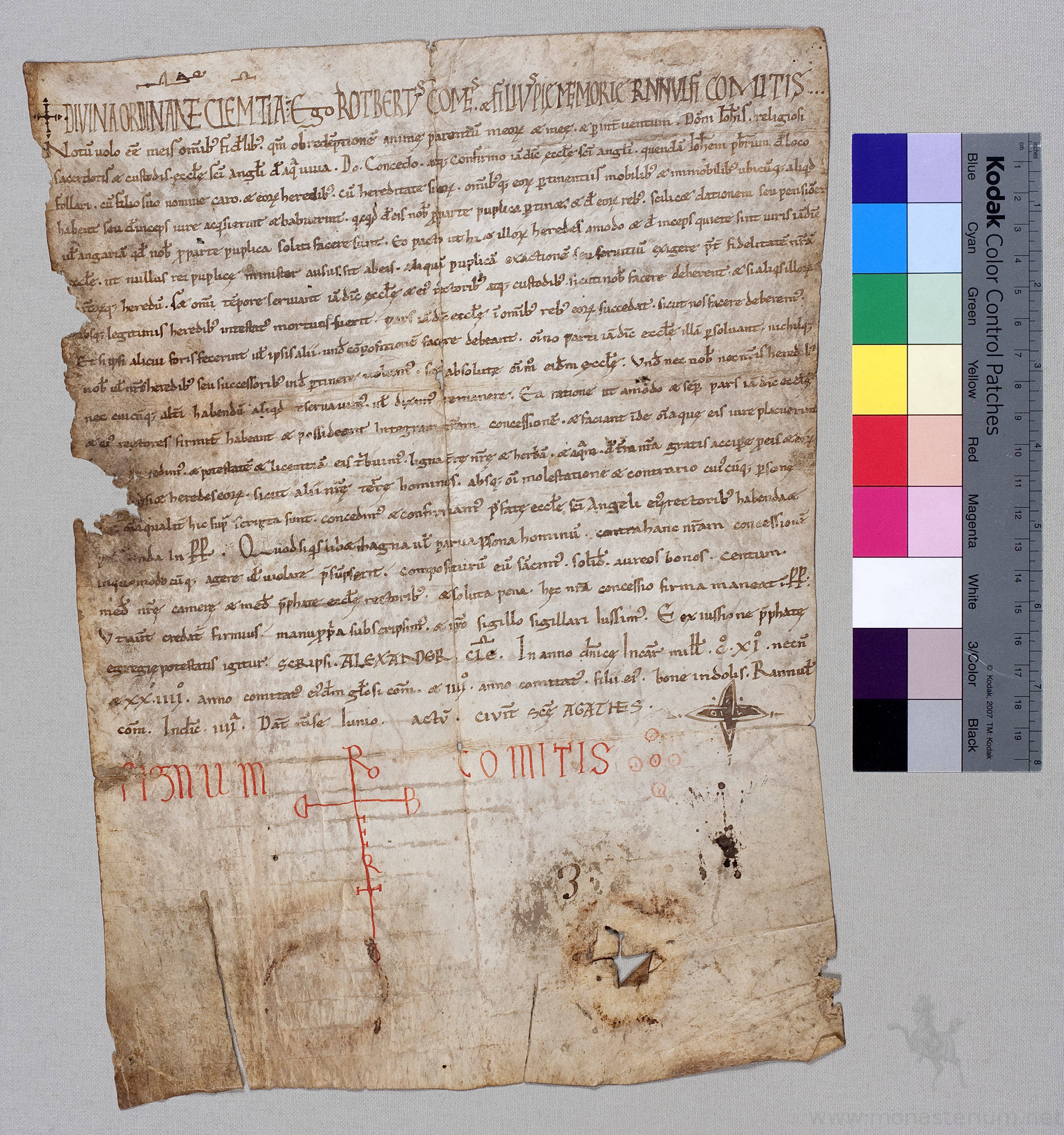Charter: Illuminierte Urkunden 1111-06-99_Neapel
Signature: 1111-06-99_Neapel
Add bookmark
1111-06-99, Civitate Sancte Agathes
Roberto conte di Caiazzo, figlio del fu Rainulfo conte, per intervento di Giovanni sacerdote della chiesa di Sant'Angelo de Acquaviva (ecclesia sancti Angeli de Aquaviva), concede in perpetuo alla detta chiesa il presbitero Giovanni, abitante del luogo detto Follari, Caro suo figlio e i loro eredi, rinunciando ai suoi diritti su tutti i loro beni presenti e futuri, oltre alle imposte e ad angaria da essi dovute; potranno tuttavia fare legna, tagliare erba e attingere acqua dalle terre del conte così come fanno gli altri suoi uomini. Maria Vittoria Longo, Valentina Giacobbe
Source Regest:
FWF Projekt P 26706-G21 "Illuminierte Urkunden"
Bearbeitungsstand: HOCH
FWF Projekt P 26706-G21 "Illuminierte Urkunden"
Bearbeitungsstand: HOCH
Current repository:
Neapel, Biblioteca della Società Napoletana di storia Patria, Chiese diverse, 10 AA I 2

- Materielle Beschreibung:
Rote Unterschrift (Signum) des Ausstellers in Form eines Monogramms; Signet des Notars. - Stil und Einordnung:
Die rote Unterschrift ist im “westlichen” Kontext ungewöhnlich, sie gehört jedoch in Byzanz, freilich für den Basileus, zum diplomatischen Standardrepertoire.
Für weitere rot geschriebene Signumzeilen mit rotem Monogramm desselben Ausstellers siehe bei 1102 Juni. - Martin Roland
Mentions:
Places
- Civitate Sancte Agathes
- Type: Ausstellungsort
- Italien
- Type: Region
Keywords
- Illuminated Charters: Niveaus:
- N1: with Additional Colours
- N3: Monogram
- N3: Other signs of authentication
Illuminierte Urkunden 1111-06-99_Neapel, in: Monasterium.net, URL <https://www.monasterium.net/mom/IlluminierteUrkunden/1111-06-99_Neapel/charter>, accessed 2025-04-27+02:00
You are copying a text frominto your own collection. Please be aware that reusing it might infringe intellectural property rights, so please check individual licences and cite the source of your information when you publish your data
The Charter already exists in the choosen Collection
Please wait copying Charter, dialog will close at success